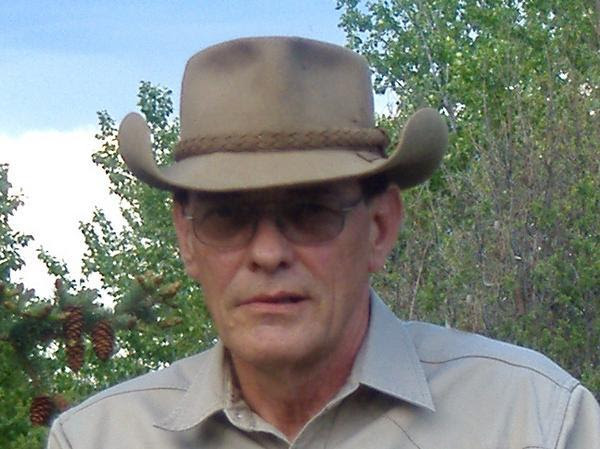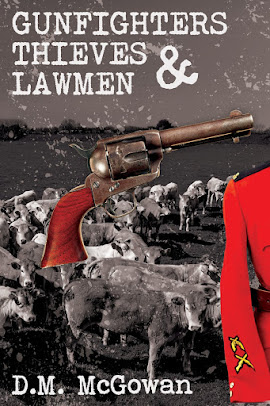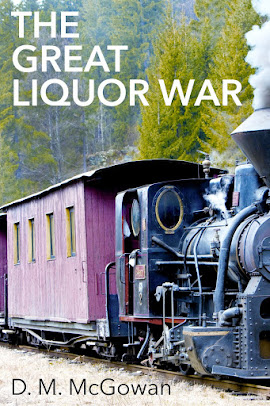I mentioned
already that the North West Mounted Police brought both horses and cattle into
the North West Territories
If is apparent that those implementing the
idea of a mounted police force to administer national and personal security in
the territory had no idea of the area, the terrain, the numbers of people in
residence, the weather or any other aspect of the country. The money spent on
the venture was completely inadequate as was the equipment and animals chosen.
Of course, as is
the case with ventures today, many of the choices were made due to the training
and previous experience of those responsible for the decisions. The new
commissioner of the force appointed by Prime Minister MacDonald was a man of military
training and experience. He had attended Sandhurst military academy, been commissioned in the Royal Artillery and
seconded to the Canadian militia where he eventually became head of the Gunnery School Kingston
Colonel French
had very specific ideas about how a military command or a quasi-military police
force should be directed and how such a group of troopers should conduct
themselves. Those ideas where from the British Isles, from his military
training, from his artillery experience and had nothing to do with the
specifics to be found on the Canadian prairies.
This is probably
a good time to mention the peculiar circumstances of rank to be found in the
early NW Mounted Police since it might become confusing as we continue. Commissioner
French had been a Lieutenant-Colonel in the Royal Artillery and retained the
designation “Colonel” in the police force but this was not exactly a
continuation of his army rank since the Act which created the force also
designated that the rank of ‘Commissioner’ was equal to a military rank of
Lieutenant-Colonel. Similarly, superintendent/inspector was equal to captain,
superintendent/sub-inspector a lieutenant, paymaster a captain and a veterinary
surgeon a lieutenant. Within the ranks those seven non-commissioned officers
leading the six Divisions and Headquarters Troops (A through F and H)
officially designated ‘chief constables’ were addressed by the men as ‘Sergeant
Major.’ The full constables, close to sixty in number were called ‘Sergeant’
and to make it all more confusing the rest of the men (about 260 after the
‘weeding out’ process), officially designated ‘sub-constables’ and equal to a
private were addressed as ‘sub-constable.”
However, back to
the livestock and why it was chosen.
The original
nine officers were chosen and appointed in 1873. That same summer the first
hundred and fifty farmers, teachers and store clerks were chosen, quickly
assembled at “New Fort” (in Toronto) then loaded on Great Lake freighters and
sent to the lake-head. From Fort William Thunder Bay Dawson
Route
The so-called Dawson Route Dawson Creek Dawson City
Following
appointment of French as Commissioner in’73 he spent a great deal of his time
ensuring that Canada’s Federal Government who had passed the Act creating the
force would actually support it once it was more than a few words on paper.
Having been assured of such support he began the recruitment of another 150 men
and made arrangements for their initial training. That accomplished he went
south to the US, caught a train for Fargo, Dakota Territory, a dogsled to Fort
Dufferin, Manitoba, rented a horse and wound up in Fort Gary, Manitoba fifteen
days later.
Colonel French
was not particularly thrilled with what he found in Fort Gary Toronto
He was also less
than pleased with the horses. Thirty eight had been purchased locally and
another thirty four where eventually purchased in Dakota Territory all of them
“westernized” and mustangs. French’s comment in his notes is that “the animals
are scarcely fit for our work.” He goes on to say that he believes they will need
“200 or 300 horses which will have to come from Canada
A constant
micro-manager French insisted on interfering with aspects of the venture in
which he had not experience whatever. For example travel in the west by large
bodies of men had always been done with pemmican as the main staple. However
French decided that instead of using the tried and true the Mounted Police
would take a “walking larder” of cattle.
On July 8, 1874 the North West Mounted Police led by Commissioner George A. French
left Fort Dufferin , Manitoba Red River carts and 73 wagons. Some of the wagons were pulled by horses but
most and all the carts were pulled by the 142 oxen in the train. Of the 311
horses 240 of them had been brought by train from the east and those that where
not thoroughbred did have a great many thoroughbreds in their ancestry. To
round out their livestock was a herd of eleven bulls and fifty four cows that
had already started calving.
(At this point some readers will understand
how this tale fits in with previous posts concerning the growth of the cattle
business in Western Canada .)
A few of the
more senior officers had a vague idea of their destination. The troopers had
been informed they would be going to the west to stop the whiskey trade.
Commissioner French thought they would make the trip in less than half the time
they would actually use. None of them had any idea of the horror they where
stepping into.







